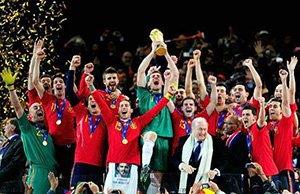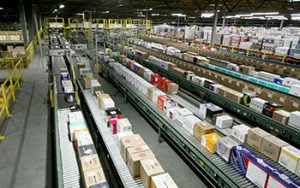
Major Sporting Events Require Better Logistics
Guillermo Albaladejo | 31 July 2013
With the World Cup and Olympics back to back in Brazil, companies will need to prep and improve their logistics operations to effectively meet demand.
It’s July 2013, we are in the aftermath of the Confederation Cup in Brazil, in which Brazil managed to bring home that tournament after a surprising game between the locals and current World and European Champions, Spain. For those of you not familiar with the Confederation Cup, here is how it works: Eight teams representing nations from around the world play to win this tournament, held every four years.
The champions of South America, North America, Europe, Asia, Africa, Oceania, the last World Cup winner and host of the next World Cup play in what is considered the best test run before the big show to come: FIFA’s Football (or soccer, for some…) World Cup. Uruguay, USA, Italy, Japan, Nigeria, Tahiti, Spain and Brazil, (who hosted the tournament and won it against the favorite Spain--much to my personal discontent), were the protagonists. Next year, the 2014 World Cup begins and will take place throughout seven cities in Brazil, where not only nations compete for the prize, but also sporting brands who dress and sponsor these teams.
The Corporate Players in the World Cup
 From a corporate perspective, one might also say that Nike (Brazil, USA, France, England, Australia), Adidas (Spain, Germany, Argentina, Netherlands, Mexico…), Puma (Italy, Chile, Uruguay, Czech Republic…), and Umbro (Ireland, Canada, Norway, Peru…) will be the main players that are going to step into the arena, ready for competition. The World Cup is the second largest sporting event in the globe, a close second to the Olympics, and is also held every four years, with a two year latency between both events; and as such, it is a huge cash generator for many industries. To name a few:
From a corporate perspective, one might also say that Nike (Brazil, USA, France, England, Australia), Adidas (Spain, Germany, Argentina, Netherlands, Mexico…), Puma (Italy, Chile, Uruguay, Czech Republic…), and Umbro (Ireland, Canada, Norway, Peru…) will be the main players that are going to step into the arena, ready for competition. The World Cup is the second largest sporting event in the globe, a close second to the Olympics, and is also held every four years, with a two year latency between both events; and as such, it is a huge cash generator for many industries. To name a few:
- Food and beverage (especially beer)
- Construction (airports, roads, stadiums, general urban infrastructure)
- Electronics (TV manufacturers to experience most of the growth)
- Sporting goods
- Logistic providers
Sporting goods expect an inter-annual growth of 5% to 9% just next year. Growth has already been seen in this course thanks to the mentioned Confederation Cup. This industry will by far exceed the GDP % growth of the Brazilian economy, being about 300% larger than the growth of the overall industry average. And the good news doesn’t end in 2014, because the other big show right around the corner is coming to Brazil too: the 2016 Olympics!
Improve Logistics Operations to Meet Demand
 To absorb this business growth, sporting goods firms will have to plan better, bigger and cheaper logistics operations to make sure they make it to the market ahead (or preferably Just in Time) of their demand. Systems with precise inventory tracking (warehouse management system) need to be combined with order platforms, which may allow for E-business. Being able to process this increase in order size will require picking modules, conveyor and sorters among others. Throwing bodies to the old DC won’t make the cut as:
To absorb this business growth, sporting goods firms will have to plan better, bigger and cheaper logistics operations to make sure they make it to the market ahead (or preferably Just in Time) of their demand. Systems with precise inventory tracking (warehouse management system) need to be combined with order platforms, which may allow for E-business. Being able to process this increase in order size will require picking modules, conveyor and sorters among others. Throwing bodies to the old DC won’t make the cut as:
- Primarily, SKUs and volumes will grow drastically, hence the storage media will need to grow as well.
- Furthermore, with more activity and more densification of the operation, better tracking and quicker response is required to keep up.
- If the industry sees, say, a 1% error in order processing at current demand, more hands touching the product will not help the matter
- Lastly, with an expected 6% inter-annual inflation, labor and rents are not about to get cheaper, so attempting capacity growth in that direction will almost always represent an increasingly more costly operation year by year.
Taking a step into automation can make the difference in short, medium and long term success in this overheated environment, particularly because the expected growth in revenue will allow for shorter ROIs, permitting more growth with the new capital expenditure resulting in a better market positioning by having lower operational costs and higher capacities.
Like in sports themselves, these corporations need to plan for the tournaments and be in their best form to compete. What you are equipped with, something they know a thing or two about, can make the difference; you wouldn’t attempt to win the Augusta master with a cricket bat. Now, let the games begin, and the fittest win.
Comments
No comments have been posted to this Blog Post
Leave a Reply
Your email address will not be published.
Comment
Thank you for your comment.